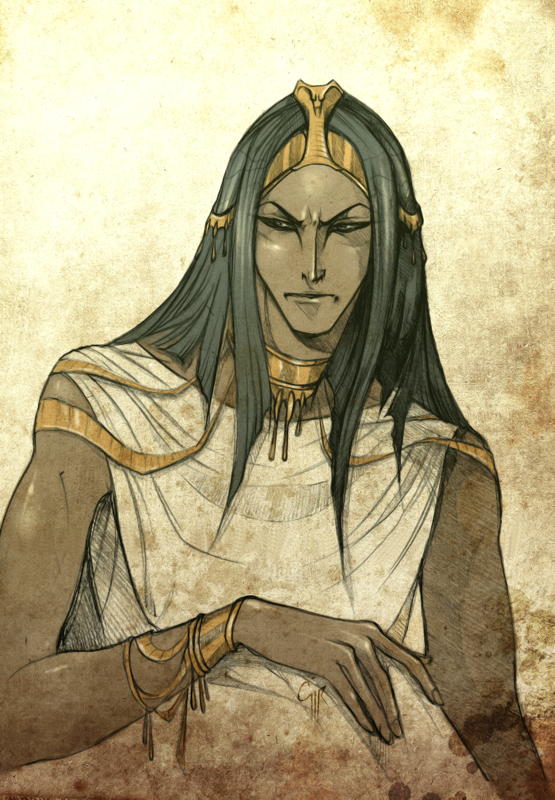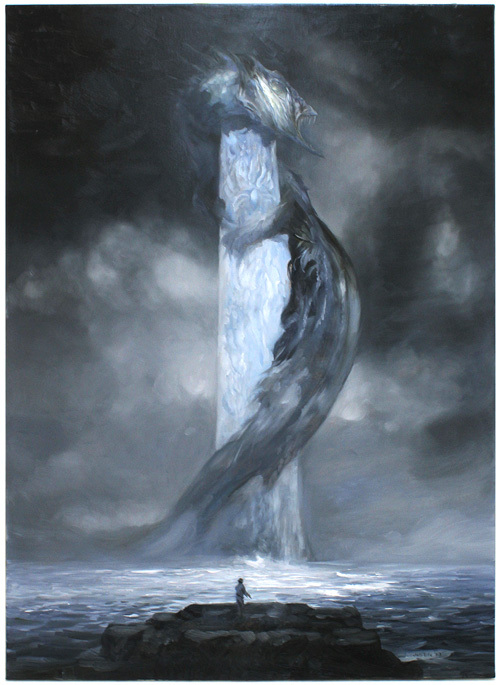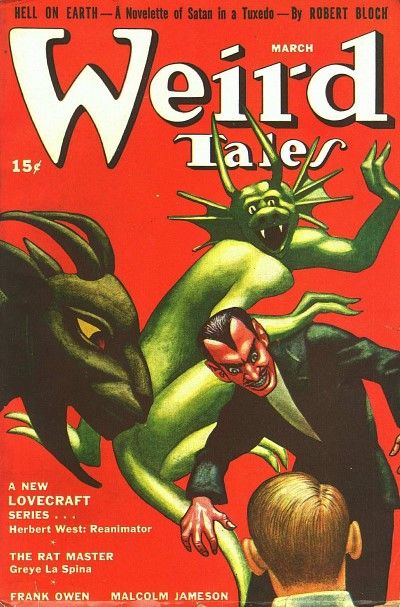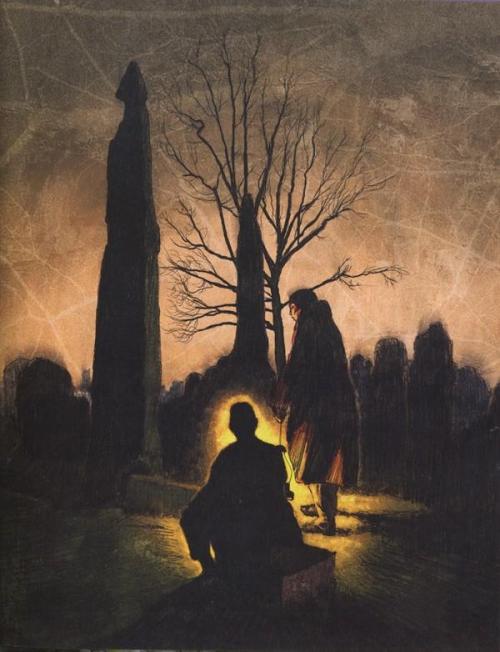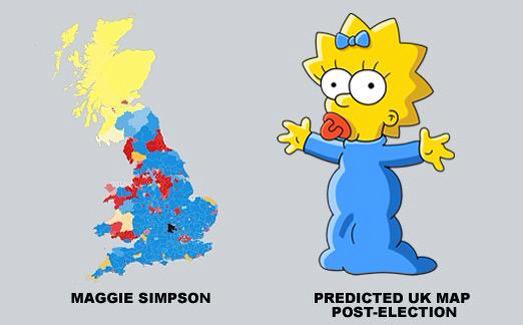 |
| Under the Pyramids - 1924 (Offerings to the Deity) |
Continuing with our third and last installment of H.P Lovecraft's work, before the emergence of the Cthulhu Mythos - "Before Cthulhu: Lovecraft's Early Eldritch" - we come now to the three years of 1922, 1923 and 1924; the arguably latter period of Lovecraft's early career in which the themes and visions of later years would become powerfully nascent. As found in the two earlier periods - at least discerned in these installments - we discover potent and powerful streams which contour and color Lovecraft's narratives into the 1920's and from whose seed would ultimately flourish things more singular and remarkable. Beginning in 1917 and further maturing as the decade turned to the 1920's, Lovecraft's talents would allow for a particular vision of eldritch narratives to emerge, though pregnant with philosophical, cosmological and unique vistas on the human condition and its place in an ever stranger world - this and others, as the writer would strain to show. The two latter periods having been colored by remarkable work already, the emerging mid 20's would find the writer refining and honing these singular visions into an ever more integrated school which would, in time, find the birth of his famed "Cthulhu Mythos" following the debut of the titular malign god in "The Call of Cthulhu" come 1926. Still, some time from then, the years of 1922 - 1924 would prove compelling and an essential crystallization of that which would animate and ordain the gods, monsters and peoples of his tales, to follow in Cthulhu's shadow.
 |
| The Lurking Fear and Other Stories (Horror Anthology - 1922) |
Of course, in another singular flourishing of Lovecraft's penmanship, revelation is lent a deeper shade of horror when intimate: more than just bodily horror but that which is deemed to be inherent or innate as to anticipate a common destiny or nature. The horror that may come from this potently illustrated - perhaps even to incendiary ends, like 1921's Arthur Jermyn - this notion of destiny and inheritance is keenly portrayed in "The Rats in the Walls". The title itself anticipating unwholesome things, the peculiar scratching a man hears behind the walls of his antique family home is only an innocent prelude to what he discovers in the cavernous reaches under the house; of his and other people's doings and where purpose intermingles to create many a dark, fleshy thing to abhor. The legacy of isolation, the break down of moral and bodily norms, compounded by strange or bygone beliefs was given vivid exploration earlier in 1922's "The Lurking Fear" - a story in many ways the American counter to the later tale of English country homes with strange families and dark pasts: an investigation of murder in a New England village leading to the discovery of monstrous, bestial creatures descended from a withdrawn family of former Dutch colonists, centuries before. One of Lovecraft's many serials, the story itself was both conventional and powerful in its cultural horror, though remarkable in fashioning a Lovecraftian narrative into a serial, at the request of the commissioner.
The early 1920's would also see some fruition of the growing relationship between Lovecraft and one Sonia Greene - his future wife - in which Sonia was encouraged to publish and write herself; an effort which saw two stories as found in 1922 "The Horror at Martin's Beach" and the later "Four O'clock". The growing social element of Lovecraft's life would see him move to New York City and the tense, sometimes difficult life he would have there with his wife: social, philosophical and ethnic questions dogging his experience of the city and its growing, diverse population of immigrants, along with the more established people of the metropolitan hub. The alienation and detachment from the throb of NYC's eclectic citizenry a major element of his life there, it would become a perennial concern - even obsession - to the self styled New England man and his preconceptions of American identity: symptomatic of deeper opinions which would manifest in his work, all throughout his life.
 |
| What the Moon Brings - 1923 (The Image amid the Ruins) |
The nature of the aforementioned inner horror - compounded by notions of destiny and nature - are reflected upon more acutely and given to wider dimensions when associated with the occult, bygone esoterica and strange rites. This is borne out in 1923's "The Festival" as a visitor to New England happens upon strange, dark rituals practiced in secret within an old town, and in which his relatives freely participated. The encounter surrendering the protagonist almost to madness, they recuperate in Arkham; reflecting upon the strange, terrible pertinence of the Necronomicon - the strange tome returning again in a Lovecraft story - and to shine light on horrible magics that make certain things pulse with life, as he saw in that ancestral town. A return to older places, shadowed by strange things and happenings, is found a little earlier in 1923 as "The Unnamable" was penned. Returning us to the town of Arkham and an ancient house close by, Randolph Carter - returning though ostensibly at an earlier period of life - encounters a friend; and there mutual encounter with a demonic spirit of amorphous nature which leaves both men beaten and gored, but alive. A creature - supposedly beyond human senses - which leaves little doubt as to its nature as the titular "The Unnamable" which lingers about the house and surrounding land.
Strange discoveries and sudden, breaching glimpses of the unknown are not alien to Lovecraft, though such is the focus of a strange, quite eldritch vignette - if it can be called that - called "Azathoth", penned though remaining as a fragment of some perhaps wider narrative in 1922. The titular god not appearing, the story follows in the way of a man living in a grey, drained dystopian city of grey towers. One man, so doubting this world, finds his visions opening unto cosmic places beyond and, one night, is delivered from his apartment to elsewhere, perhaps some unknown dimension once glimpsed in prelude to what begins. Though only a fragment of what might have been, the story has a lilting quality which anticipates the wider cosmic and unknown, so very prevalent and resonant in some of the best Lovecraft stories. Also, and to a great degree, we find the theme of revelation and discovery amid the cracks in our reality; be they physical or spiritual and often to incredible consequences, in the discovery of what lies beyond. In the words of one Lovecraft fan.
"The notion that present day structures could sit atop more ancient manifestations of cosmic phenomena, I think, is a classic Lovecraft motif. You dig down as deep as the ziggurats and there's more; you think you're at the basement - the metaphysical basement - but you're not. You need to dig even deeper."
Paul De Philipo,
Science Fiction writer and Providence resident.
 |
| The Shunned House - 1923 (What Lies beneath the Cellar) |
The early 1920's witnessing the nascence of Lovecraft's cosmological vision in the writer's literature, it's perhaps easier now to see the roots - the philosophical essence - of that which would coalesce into the mythos, seen after the debut of Cthulhu. Emerging from among the author's inspirations and ultimately assimilating them too, the stories of Lovecraft's early career from 1917 to 1924 are eclectic and vivid in what they proffer to a reader: their vision more so when taken together, allowing for the respective stories to aggregate something more than just their sum. Of course, that sum remarkable in itself, the latter reality of Lovecraft's work conjures something more; baring out a continuum in which the emergent mythos stories are a perhaps abrupt, strange delivery into the unfolding world - and its sometimes bizarre, incredible and grotesque realms beyond.
This seen in both the beginnings of the mythos and the interwoven Dream Cycle, the singular world we encounter has both captivated, compelled and inspired generations of readers, and will seemingly continue to do so. Concluding this last installment of this short series, I hope to have elucidated on the origin of the Cthulhu Mythos, as found in the stories penned sometime before and the stories which bore through the cosmological and philosophical narrative between 1917 and 1924; going on to become cardinal elements in the alchemy of Lovecraft's vision of the occult, the unknown and the strange natures found all about, and therein.
As before, please find below audio renditions of some notable stories from this latter period of Lovecraft's early career; so following in Azathoth, The Hound, The Unnamable, The Shunned House and Under the Pyramids, along with summations of their stories.
Azathoth -1922
One of Lovecraft's most remarkable and enigmatic works which survives as a fragment of what could have been more, given time. In a grey dystopia, a solitary man goes about his unassuming life until his perception is widened and he begins to muse on the secret, hidden and untold dimensions beyond our own. Where this new knowledge and instinct will lead him may be very well beyond our world, as we know it.
The Hound -1922
Moved by their tedium to incredible acts of audacity and macabre interest, two grave robbers hear of a particular grave within which lies entombed a remarkable relic. Their collection of macabre and occult relics already swollen, the allure of this is too great, and soon a particular amulet is in their keeping - until a strange howling, as if of a distant, great canine - begins to haunt them. Both may soon discover the unsavory price for their curiosity, when disturbing the dead.
The Unnameable -1923
Randolph Carter returns - albeit a more tempered mind just beginning his occult foray - as a trip to Arkham to investigate a reputedly haunted house and its surrounding land allows a reunion with an old friend. It is here that Randolph may come to appreciate that the haunting of the old property belies a far more immediate, and terrifying, presence for both men in the singular, ineffable entity that lingers nearby.
The Shunned House -1924
A strange story of cursed abodes, dark histories and what curiosity may unearth. A particularly ancient house in Providence, Rhode Island, captures the interest of paranormal researchers: their investigation coming atop of the house's long, peculiar history as a site of unnatural things, frequent death and haunting. Seeking the cause or some manifestation of this power, both may come face to face with the root of the strange legacy within the shunned house.
Under the Pyramids -1924
A remarkable work, latterly heralded as some of Lovecraft's best efforts in his early career, finds a tale told on behalf of the famed escape artist Harry Houdini, and a particular trip to Egypt in the year 1910. Here, in the shadow of myth, magic and occult histories, the protagonist is confronted with antique horrors which may only be a prelude to something far grander and sinister, hidden away for millennia under the sands; lying at the heart of many terrible things, as Harry may only bare witness to.


